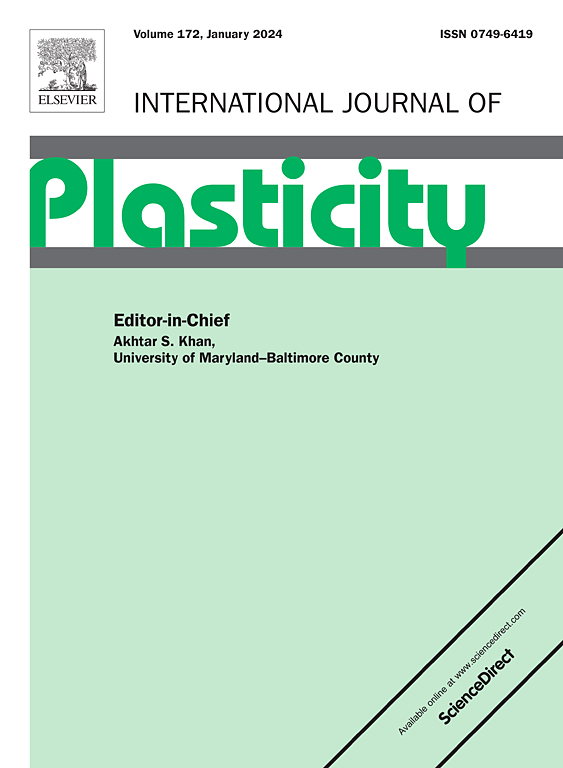Stability of high energy superlattice faults in Ni-based superalloys from atomistic simulations
IF 9.4
1区 材料科学
Q1 ENGINEERING, MECHANICAL
引用次数: 0
Abstract
High energy stacking faults generated by lattice dislocations entering the strengthening precipitates of Ni-based superalloys are responsible for the unique mechanical properties of these structural materials. However, the question about stability of these faults has not received the attention it deserves. Using atomistic simulations, we show that the anti-phase boundary (APB) can spontaneously transform into super intrinsic stacking fault (SISF) and the complex stacking fault (CSF) can spontaneously transform into L12 lattice structure. The former transformation explains the experimentally observed presence of isolated SISFs and super extrinsic stacking faults (SESFs) in the precipitates. Finally, multiple studies were focused on finding alloying additions which increase the APB and CSF energies. We demonstrate therefore that alloying additions which increase stacking fault energies may conversely decrease their stabilities.
ni基高温合金中高能超晶格缺陷的原子模拟稳定性
晶格位错进入镍基高温合金强化相产生的高能层错是导致这些结构材料具有独特力学性能的原因。然而,这些断层的稳定性问题并没有得到应有的重视。通过原子模拟,我们发现反相边界(APB)可以自发地转化为超本禀层错(SISF),复杂层错(CSF)可以自发地转化为L12晶格结构。前者的转变解释了在实验中观察到的析出相中存在孤立的sifs和超外在层错(sesf)。最后,多项研究的重点是发现合金添加物可以增加APB和CSF能量。因此,我们证明了合金的添加会增加层错能,反过来会降低层错的稳定性。
本文章由计算机程序翻译,如有差异,请以英文原文为准。
求助全文
约1分钟内获得全文
求助全文
来源期刊

International Journal of Plasticity
工程技术-材料科学:综合
CiteScore
15.30
自引率
26.50%
发文量
256
审稿时长
46 days
期刊介绍:
International Journal of Plasticity aims to present original research encompassing all facets of plastic deformation, damage, and fracture behavior in both isotropic and anisotropic solids. This includes exploring the thermodynamics of plasticity and fracture, continuum theory, and macroscopic as well as microscopic phenomena.
Topics of interest span the plastic behavior of single crystals and polycrystalline metals, ceramics, rocks, soils, composites, nanocrystalline and microelectronics materials, shape memory alloys, ferroelectric ceramics, thin films, and polymers. Additionally, the journal covers plasticity aspects of failure and fracture mechanics. Contributions involving significant experimental, numerical, or theoretical advancements that enhance the understanding of the plastic behavior of solids are particularly valued. Papers addressing the modeling of finite nonlinear elastic deformation, bearing similarities to the modeling of plastic deformation, are also welcomed.
 求助内容:
求助内容: 应助结果提醒方式:
应助结果提醒方式:


